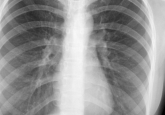How AI is shaping the future of value-based care

In this interview, Diagnostic Robotics CEO Kira Radinsky delves into the importance of value-based care (VBC) and how the AI-driven solutions at Diagnostic Robotics can help to reduce cost of care while optimizing patient health outcomes.
What is Diagnostic Robotics?
Diagnostic Robotics (DR) specializes in cost of care reduction by optimizing preventive care management through better AI-driven targeting, intervention matching, and creation of personalized clinical patient journeys. The solutions that have been embedded through partnerships with the Blues plan to gain 40 million members in the US through their value-based-care providers and care management teams demonstrating $1600 per member per month savings.
Why did you create Diagnostic Robotics? Are there any particular challenges you set out to overcome when founding the company?
DR was founded with the goal of revolutionizing the healthcare experience and leveraging AI to drive proactive intervention. As healthcare and data science experts, our mission is to continually search for better. With this at our core, our solution is built to drive better recommendations for treatment and care – ultimately resulting in improved patient outcomes and reduced cost of care. We imagine a world where the most advanced technologies in the field of AI can make healthcare better, cheaper, and more widely available by collaborating with some of the largest healthcare organizations around the world to help make our vision for a better world into a reality.
Our company has set out to tackle the various challenges of the ever-changing healthcare landscape. We adapted to assist in predicting the spread of COVID-19 in 2020, and have since shifted our focus to predicting patients who will experience health condition exacerbations. By providing clear insights into what is driving patient risk, and what action can be taken to prevent deterioration, we supply health plans and providers with the tools necessary to succeed in VBC.
What are some of the most interesting use cases of your platform?
DR handles a myriad of interesting and complex use cases with our solutions. Starting with our Clinical Concierge solutions for intake, triage, and navigation, we handle incoming patients for one of the top breast cancer clinics in the US. Additionally, we partner with multi-specialty facilities to engage patients, analyze their presenting symptoms or conditions, and route them to the appropriate facility for care.
Our clinical decision support solution handles a variety of use cases – ranging from preventable hospitalizations and avoidable emergency department visits to complex chronic conditions such as diabetes, COPD, MSK, and others. Beyond this, we also help manage populations with multiple morbidities such as those with underlying behavioral health issues that put them at risk for an inpatient stay due to chronic condition exacerbation. Across all of our use cases we seek to prevent events such as avoidable surgeries, emergency department visits and hospitalizations.
If you could pick one thing, what would you most like to accomplish in Diagnostic Robotics within the next 5 years?
If I were to pick one thing to accomplish in DR within the next 5 years, it would be to achieve a highly accurate, efficient and accessible AI-driven framework that can be integrated into the existing healthcare infrastructure to facilitate the expansion of value-based care. Such tools would not only speed up cumbersome healthcare processes, but also reduce the rate of misdiagnosis, increase patient healthcare access, reduce costs, and make high quality healthcare more accessible to underserved regions. This would encompass:
- Accuracy: enhance the diagnostic accuracy of robotic systems to surpass human performance in specific tasks. This would involve continuous data gathering, iterative model training, and validation against real-world outcomes.
- Integration: seamlessly integrate AI and robotic diagnostics into existing clinical workflows. This would mean making the technology compatible with electronic health records (EHR) systems, existing diagnostic tools, and other healthcare tech infrastructures.
- Accessibility: make the technology affordable and scalable to various healthcare settings – from advanced hospitals in developed countries to remote clinics in low-resource settings. This would involve creating adaptable models that can work with varying amounts of data and in different cultural or logistical contexts.
- Ethics and trust: building trust among healthcare professionals and patients would be crucial. Ensuring that the AI-driven diagnostic tools are transparent in their decision-making process and respect patient privacy would be paramount.
- Continuous learning and adaptation: the field of medicine is always evolving. To stay relevant and accurate, these robotic diagnostic systems would need mechanisms to continuously learn from new data and adapt to emerging medical knowledge.
Interviewee profile:
 Kira Radinsky is the CEO and CTO of Diagnostic Robotics (Tel Aviv, Israel), where the most advanced technologies in the field of AI are harnessed to make healthcare better, cheaper and more widely available. In the past, Kira co-founded SalesPredict, acquired by eBay in 2016, and served as eBay Director of Data Science and Chief Scientist (IL).
Kira Radinsky is the CEO and CTO of Diagnostic Robotics (Tel Aviv, Israel), where the most advanced technologies in the field of AI are harnessed to make healthcare better, cheaper and more widely available. In the past, Kira co-founded SalesPredict, acquired by eBay in 2016, and served as eBay Director of Data Science and Chief Scientist (IL).
For the last two decades Kira has been focusing on the field of medical data mining. Her first work on the topic was when Kira was in Microsoft Research, where she developed predictive algorithms that recognized the early warning signs of globally impactful events, including political riots and disease epidemics. In 2013, Kira was named the MIT Technology Review’s 35 Young Innovators Under 35, in 2015 as Forbes 30 under 30 rising stars in enterprise technology, and in 2016 selected as “woman of the year” by Globes. Kira writes about the practical applications of predictive analytics both for general good in her blog, and in business – in publications such as the Harvard Business Review (MA, USA). Kira continues to remain involved in research activities including: publishing work, organizing workshops and tutorials, and speaking at the world’s leading data mining conferences, WWW, SIGIR, AAAI and WSDM among others, and serving as a visiting Professor at the Technion in Haifa, Israel.


